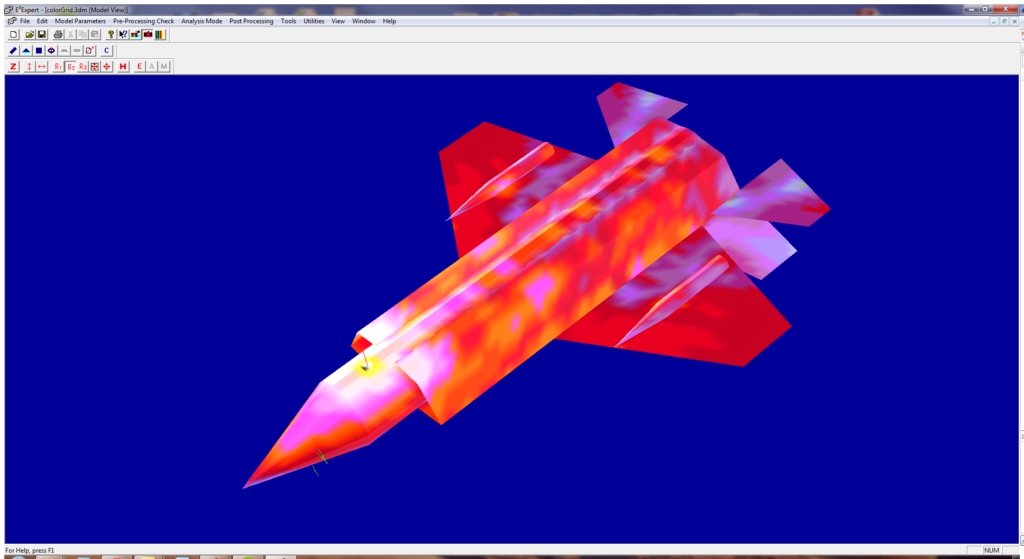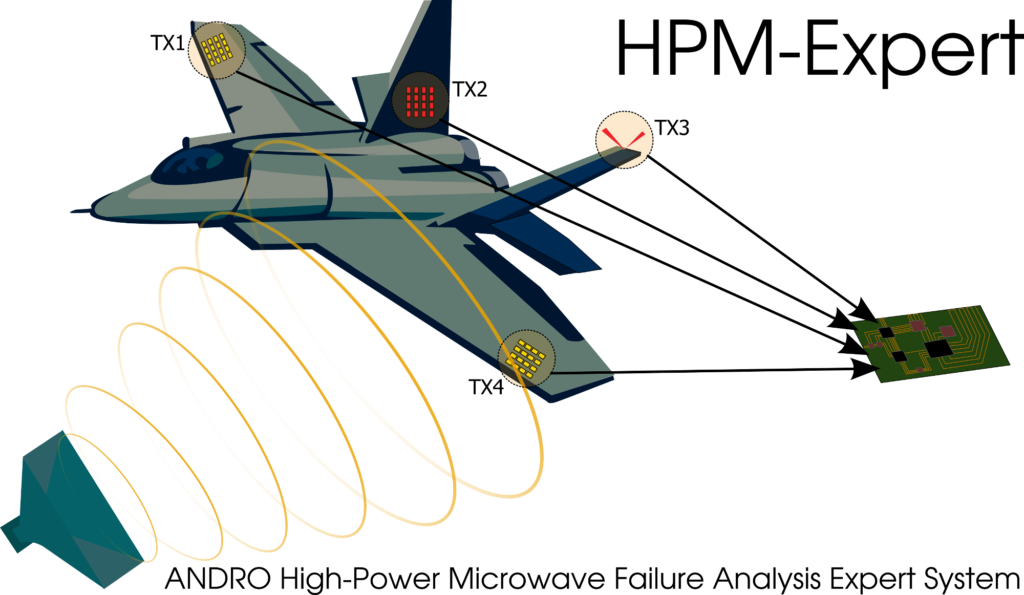E³Expert
Research & Development in Electromagnetic Environment Effects (E³) Technologies
Application of AI/Expert Systems to E³ Modeling and Simulation E³Expert for Electromagnetic Compatibility (EMC) Modeling of Complex Systems and Co-site Analysis of Multi-spectral (RF Communications and Radar) Systems/Environments
E³Expert, developed for the Air Force and Navy under Small Business Innovation Research (SBIR) contract, is ANDRO’s premier AI/expert system based computer tool that is used to predict intrasystem or co-site electromagnetic interference/compatibility (EMI/C) for onboard systems (consisting of antennas, wire cables, and equipment).It can also be used to analysis intersystem or mutual electromagnetic coupling between external or offboard sensor systems. The tool computes the electromagnetic coupling between distributed aerospace, land, and marine systems deployed within the RF battlespace volume. This involves physical layer modeling of reconfigurable systems of systems scenarios. At this layer, E³Expert models individual radars, communications assets and information systems as nodes. The nodes are then analyzed to compute mutual electromagnetic coupling interactions as well as calculate the susceptibility/vulnerability response of the nodes to cumulative incident energies from external sources. One of the relevant E³ concerns is the effect of radar jamming sources on communications systems and grids for assured RF communications, information systems and network integrity, and tactical information warfare.

HPM-Expert
High Power Microwave Failure Analysis Expert System Toolkit (HPM Expert)
This research effort is to develop a tool to model the electromagnetic vulnerability/interference (EMV/I) of electronic systems, subsystems and components to directed-energy HPM weapons. A complete HPM-Expert conceptual framework has been developed for performing simulation-based failure analyses that establishes HPM weapons’ effects on targeted electronics associated with both front- and back-door coupling paths (e.g., communications systems, electro-optical/infrared sensors, Global Positioning Systems, inertial navigation systems, and processors). The focus is on device/component/circuit-level EMV/I and quantifying associated disturbance, disruption, or damage (DDD) thresholds. A combination of system-level analytical and numerical tools, statistical electromagnetics, domain decomposition, and sneak circuit analysis (SCA) techniques are integrated and applied to address this problem in the frequency domain and which can be extended into the time domain. This will lead to a mature capability that will increase the Navy’s ability to protect its own electronic systems from HPM attack, as well as to determine the level of damage incurred by the enemy. The objective of this proposed effort is two-fold: (i) develop a pre-prototype HPM-Expert computer modeling and simulation capability based on the refined conceptual framework and demonstrate it on a sample challenge problem to be postulated by the government; and (ii) develop a working prototype capability that integrates the various algorithms and tools into a single, stand-alone package consisting of an analytical approach and process definition that can be readily transitioned for use in selected military Programs of Record as well as commercialized in cooperation with one or more technology transition partners.

Intergrated EMPro
Integrated EM Prediction (Integrated EMPro System)
Improved Analysis Techniques for Prediction of Avionics Electromagnetic Interference/Vulnerability: Integrated EMPro System
Efforts will be made to significantly advance the state-of-the-art in physics-based electromagnetic interference and vulnerability (EMI/V) analysis tools by incorporating system performance parameters and characterizations of subsystem components within aircraft transmitters and receivers. The new capability under development is called Integrated EMPro. In this R&D effort, a detailed description of the nature of, and information requirements for, field-circuit interaction computational engines and multi-physics simulators to be interfaced with the analysis tool is being developed. Consideration is being given to how the overall prediction accuracy degrades as a function of the level of detail associated with the model library.
EMSTATES
EM Susceptibility Analysis (EMSTATES)
Stochastic Characterization of Naval Aircraft Electromagnetic Vulnerability: Electromagnetic Susceptibility Threshold Analysis Techniques by Estimation and Statistics (EMSTATES)
Efforts are required to develop and demonstrate computational electromagnetics (CEM) tools, models, and methodologies capable of characterizing the fields within Naval aircraft and the associated currents on avionic systems and their interconnecting cables in the operational electromagnetic (EM) environment. A desired feature of these tools, models and methods includes the ability to quantify results stochastically in order to facilitate weapon system performance risk assessments. The development of a set of guidelines for the application of modeling and assessment methodologies to more accurately predict representative trends/bounds and a proof-of-principle demonstration of advanced stochastic concepts are key goals of this effort.
